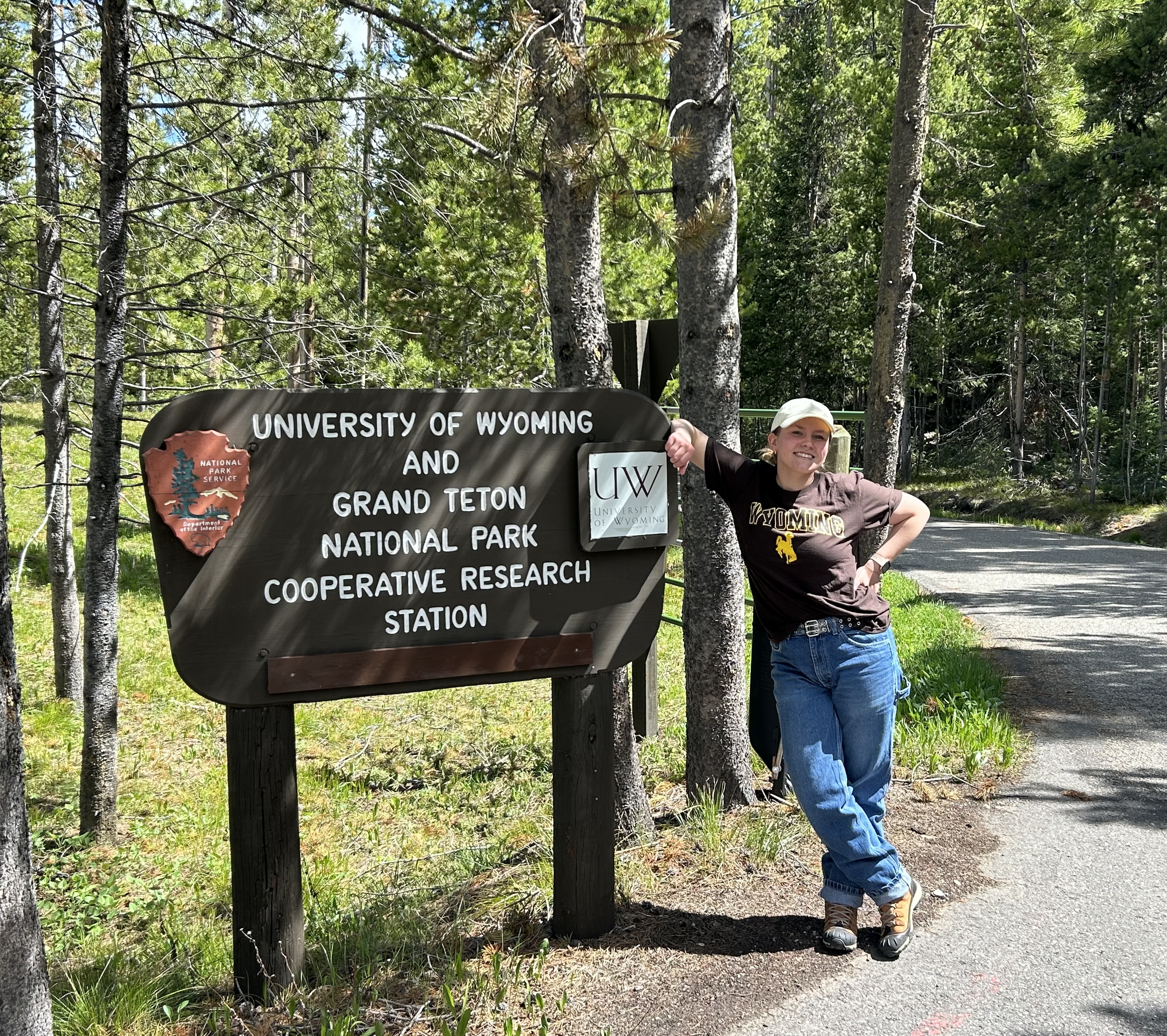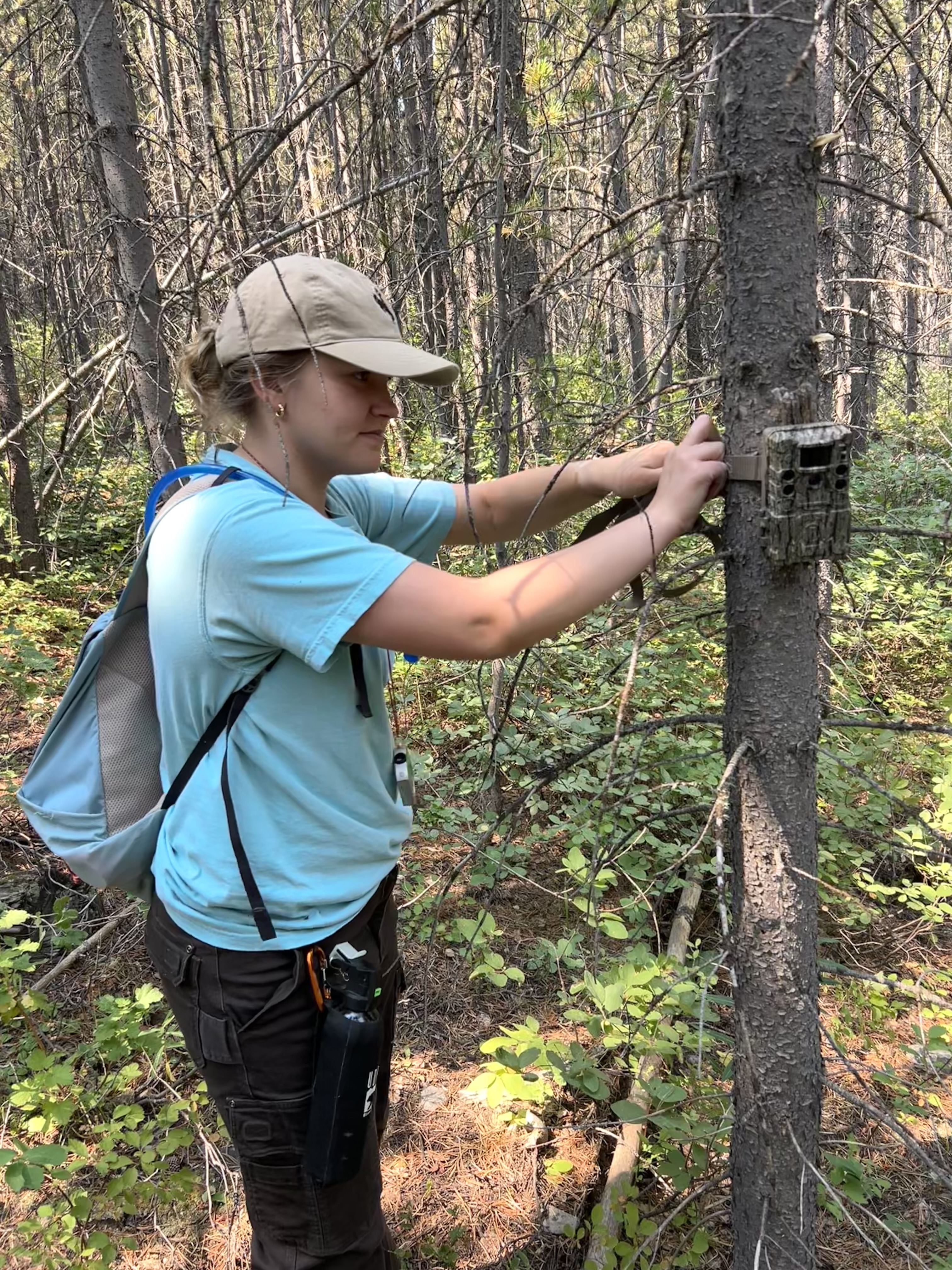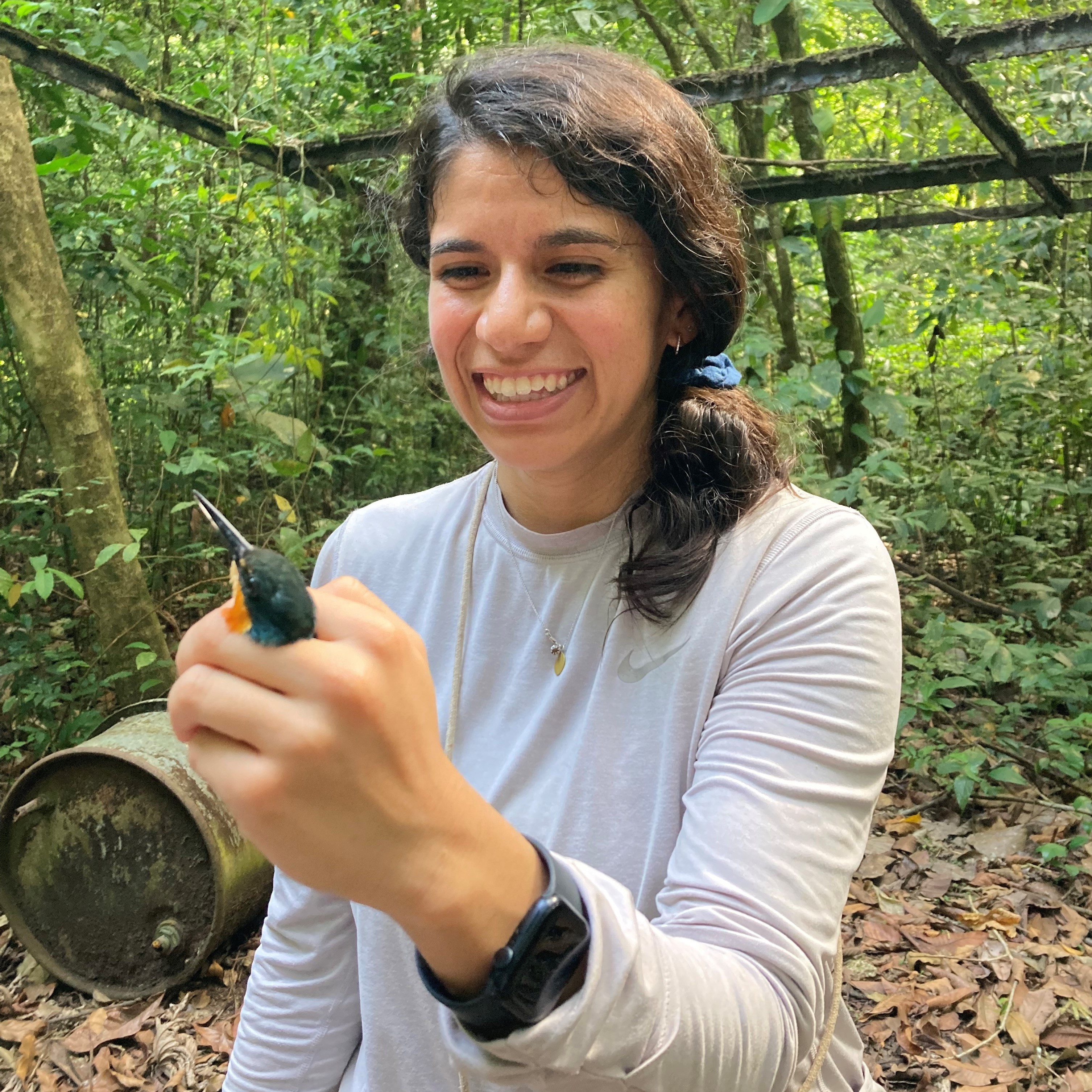No Slides Entered.
Lauren Wetterau - "Effects of Red Squirrel Middens on Biodiversity and Species Abundance in the Greater Yellowstone Ecosystem"
Lauren Wetterau
2025 Recipient of the Biodiversity Graduate Student Research Enhancement Grant and the Don and Judy Legerski UW Teton Graduate Scholars in Biodiversity Fellowship Award
Graduate Advisor: John Koprowski
Department of Zoology and Physiology
The North American red squirrel acts as an ecosystem engineer in coniferous forests by larder-hoarding pinecones and creating distinctive mound-like structures known as middens. Red squirrels rely on these stores especially in resource-limited times like winter, but middens serve as nutritional hotspots, shelter, and a regulated microclimate for a wide variety of additional forest animals. Despite evidence of red squirrels' ecosystem engineering capabilities, the broader ecological impacts of middens on wildlife communities remain poorly understood. The overarching objective of my research is to assess the effects of red squirrel middens on biodiversity and species abundance in the Greater Yellowstone Ecosystem (GYE). Specifically, I aim to determine whether middens act as resource hubs that attract and support mammalian, avian, and arthropod species. This research aims to address three questions: 1) Does biodiversity increase near middens? 2) Does individual species abundance increase near middens? 3) Do mammals spend more time at midden sites than non-midden sites?
To answer these questions, I will compare midden areas to non-midden areas in various forest patches across the GYE. Each midden site will be centered around an active midden and paired with a non-midden site of the same size located 150 m away within the same forest stand. I will collect data at 200 sites, composed of 100 midden sites and 100 paired non-midden sites, throughout the GYE. At each site, I will set up trail cameras and conduct land surveys, bird point count surveys, and insect pitfall trap surveys to collect data on the plant and animal communities that live there. I will use this data to determine the biodiversity, species abundance, and mammals’ time spent at each site
Share This Page


Research Highlights




